【实例简介】结构化数据的深度学习:Deep Learning with Structured Data
深度学习提供了识别隐藏在各种数据中的复杂模式和关系的潜力。《结构化数据深度学习》向您展示了如何将强大的深度学习分析技术应用到结构化、表格式数据中,您将在现实世界的企业所依赖的关系数据库中找到这些数据。这本书充满了实际的,相关的应用,教你如何深度学习可以增强你现有的机器学习和商业智能系统。
对这项技术
在大多数数据科学项目中,一半的时间都花在清理和准备数据上。但有一个更好的方法:深度学习技术为表格数据和关系数据库优化,提供洞察和分析,而不需要密集的特征工程。学习以更少的数据过滤、验证和擦洗来解锁深度学习性能的技能。
关于这本书
结构化数据深度学习将为您提供表格数据和关系数据库的强大数据分析技术。开始使用一个基于多伦多交通系统的数据集。在阅读本书的过程中,您将了解为深度学习设置表格数据是多么容易,同时解决关键的生产问题,如部署和性能监视。
里面有什么
何时何地使用深度学习
Keras深度学习模型的架构
培训、部署和维护模型
衡量读者的表现
适合具有中级Python和机器学习技能的读者。
【实例截图】
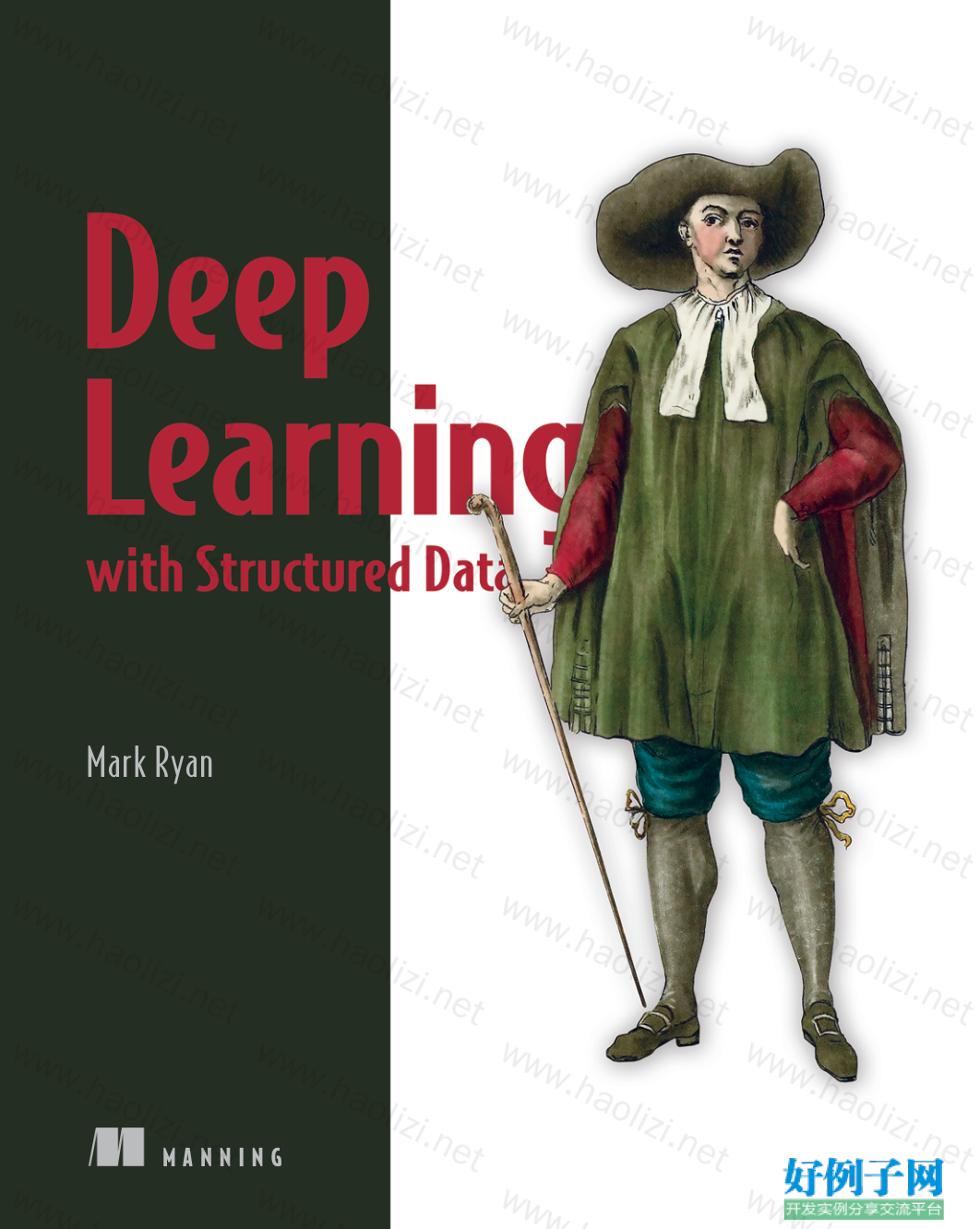

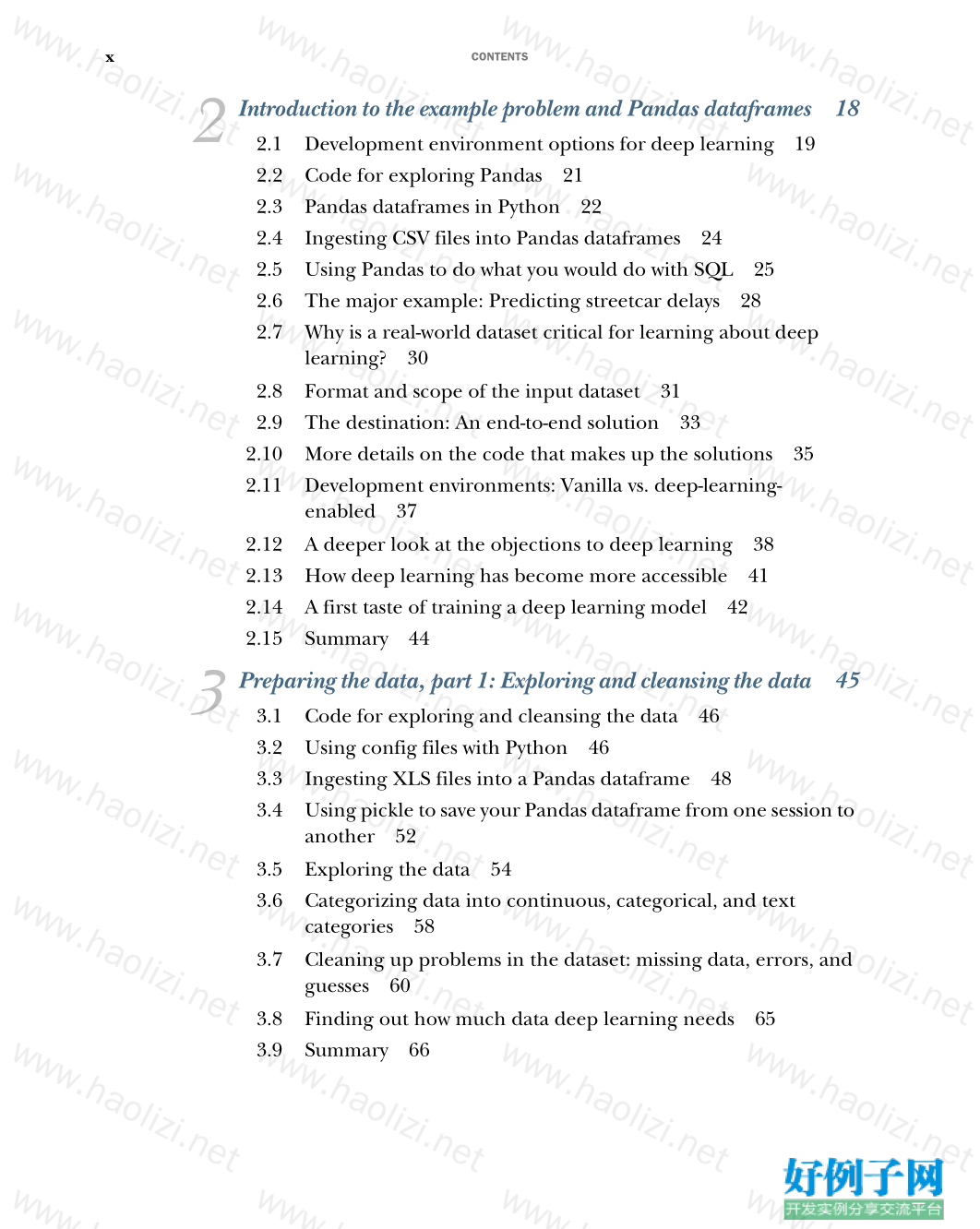
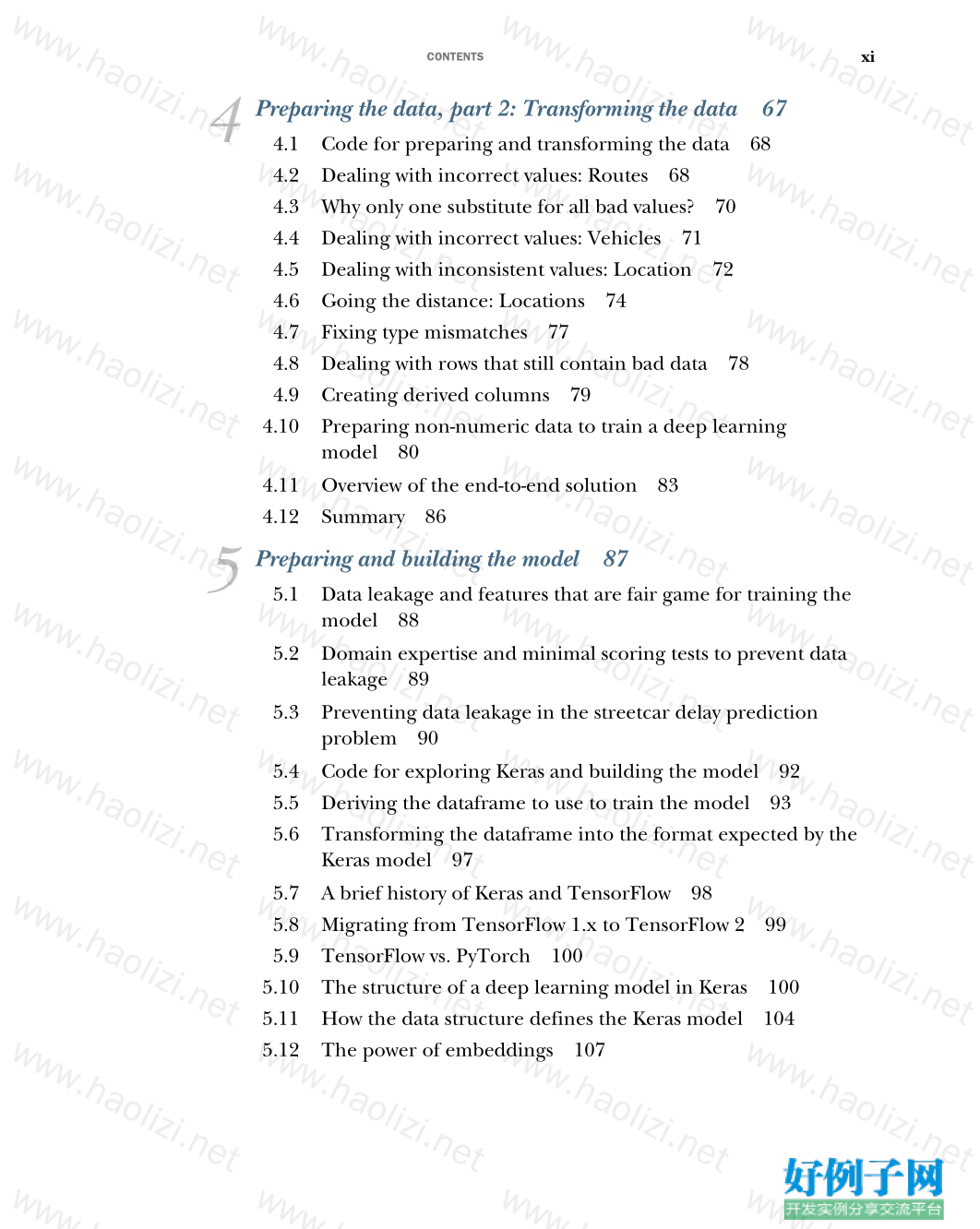
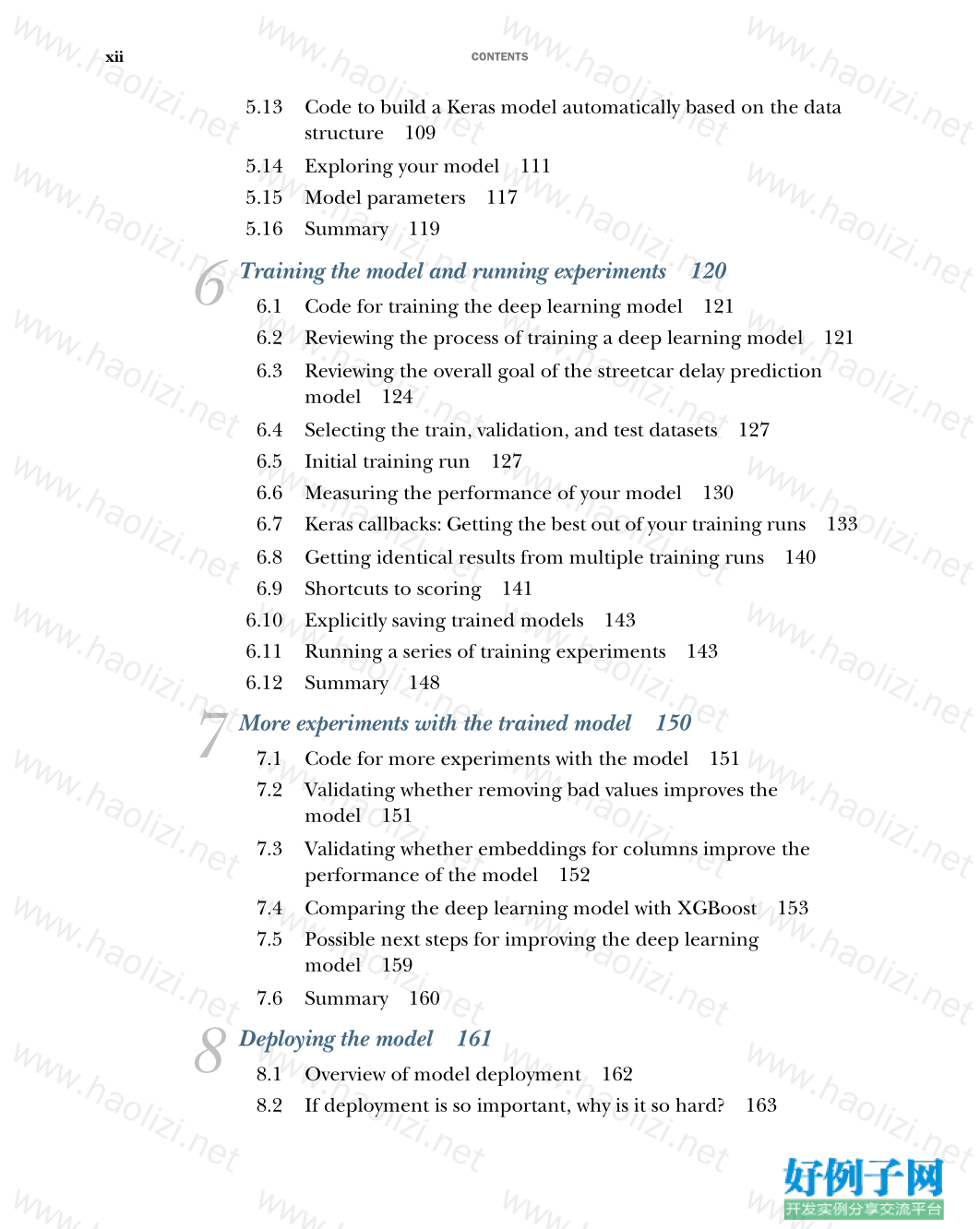
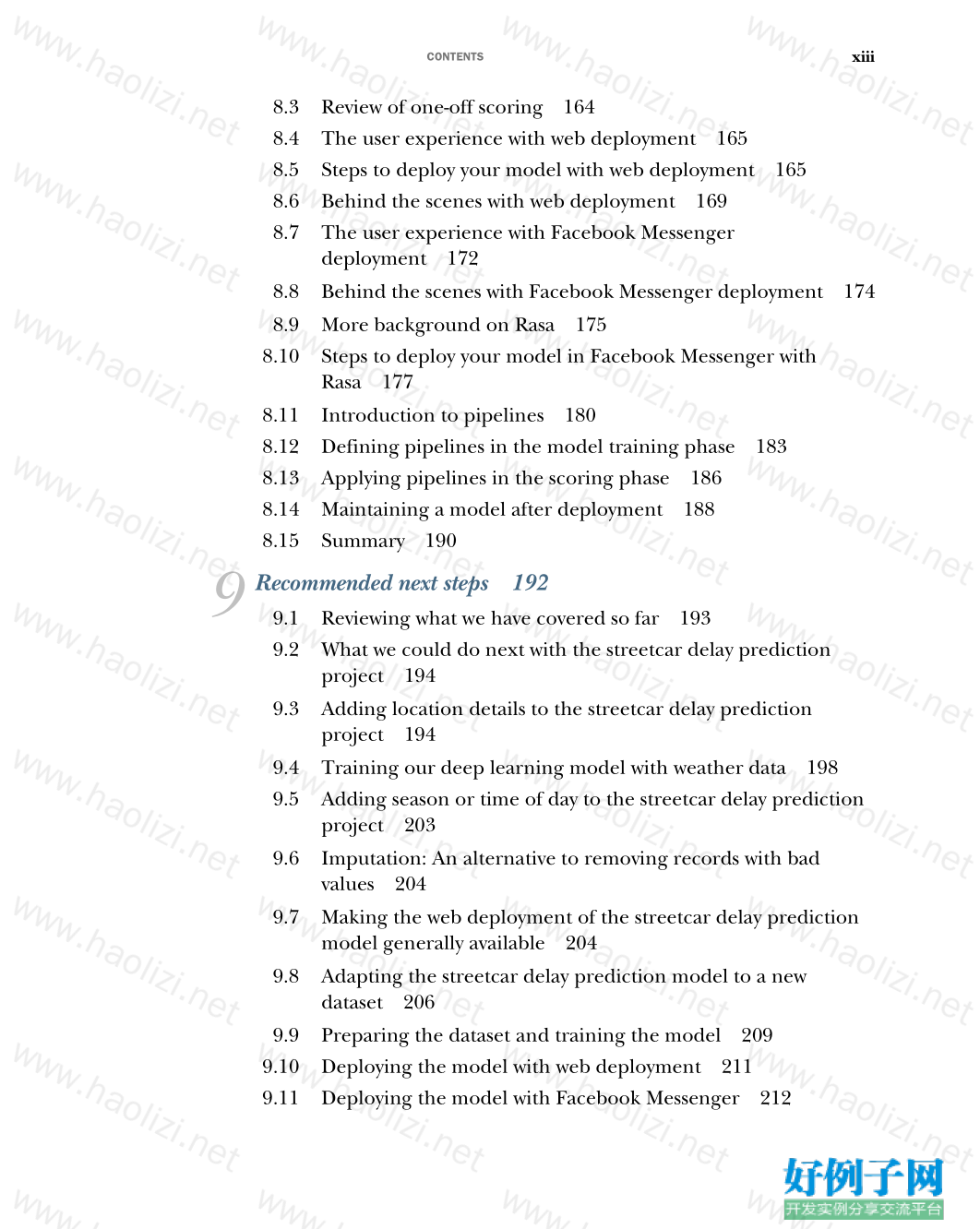

【核心代码】
contents
preface xv
acknowledgments xvii
about this book xviii
about the author xxii
about the cover illustration xxiii
1
Why deep learning with structured data? 1
1.1 Overview of deep learning 2
1.2 Benefits and drawbacks of deep learning 6
1.3 Overview of the deep learning stack 9
1.4 Structured vs. unstructured data 10
1.5 Objections to deep learning with structured data 12
1.6 Why investigate deep learning with a structured data
problem? 14
1.7 An overview of the code accompanying this book 14
1.8 What you need to know 15
1.9 Summary 16CONTENTS
x
2
Introduction to the example problem and Pandas dataframes 18
2.1 Development environment options for deep learning 19
2.2 Code for exploring Pandas 21
2.3 Pandas dataframes in Python 22
2.4 Ingesting CSV files into Pandas dataframes 24
2.5 Using Pandas to do what you would do with SQL 25
2.6 The major example: Predicting streetcar delays 28
2.7 Why is a real-world dataset critical for learning about deep
learning? 30
2.8 Format and scope of the input dataset 31
2.9 The destination: An end-to-end solution 33
2.10 More details on the code that makes up the solutions 35
2.11 Development environments: Vanilla vs. deep-learning�
enabled 37
2.12 A deeper look at the objections to deep learning 38
2.13 How deep learning has become more accessible 41
2.14 A first taste of training a deep learning model 42
2.15 Summary 44
3
Preparing the data, part 1: Exploring and cleansing the data 45
3.1 Code for exploring and cleansing the data 46
3.2 Using config files with Python 46
3.3 Ingesting XLS files into a Pandas dataframe 48
3.4 Using pickle to save your Pandas dataframe from one session to
another 52
3.5 Exploring the data 54
3.6 Categorizing data into continuous, categorical, and text
categories 58
3.7 Cleaning up problems in the dataset: missing data, errors, and
guesses 60
3.8 Finding out how much data deep learning needs 65
3.9 Summary 66CONTENTS
xi
4
Preparing the data, part 2: Transforming the data 67
4.1 Code for preparing and transforming the data 68
4.2 Dealing with incorrect values: Routes 68
4.3 Why only one substitute for all bad values? 70
4.4 Dealing with incorrect values: Vehicles 71
4.5 Dealing with inconsistent values: Location 72
4.6 Going the distance: Locations 74
4.7 Fixing type mismatches 77
4.8 Dealing with rows that still contain bad data 78
4.9 Creating derived columns 79
4.10 Preparing non-numeric data to train a deep learning
model 80
4.11 Overview of the end-to-end solution 83
4.12 Summary 86
5
Preparing and building the model 87
5.1 Data leakage and features that are fair game for training the
model 88
5.2 Domain expertise and minimal scoring tests to prevent data
leakage 89
5.3 Preventing data leakage in the streetcar delay prediction
problem 90
5.4 Code for exploring Keras and building the model 92
5.5 Deriving the dataframe to use to train the model 93
5.6 Transforming the dataframe into the format expected by the
Keras model 97
5.7 A brief history of Keras and TensorFlow 98
5.8 Migrating from TensorFlow 1.x to TensorFlow 2 99
5.9 TensorFlow vs. PyTorch 100
5.10 The structure of a deep learning model in Keras 100
5.11 How the data structure defines the Keras model 104
5.12 The power of embeddings 107CONTENTS
xii
5.13 Code to build a Keras model automatically based on the data
structure 109
5.14 Exploring your model 111
5.15 Model parameters 117
5.16 Summary 119
6
Training the model and running experiments 120
6.1 Code for training the deep learning model 121
6.2 Reviewing the process of training a deep learning model 121
6.3 Reviewing the overall goal of the streetcar delay prediction
model 124
6.4 Selecting the train, validation, and test datasets 127
6.5 Initial training run 127
6.6 Measuring the performance of your model 130
6.7 Keras callbacks: Getting the best out of your training runs 133
6.8 Getting identical results from multiple training runs 140
6.9 Shortcuts to scoring 141
6.10 Explicitly saving trained models 143
6.11 Running a series of training experiments 143
6.12 Summary 148
7
More experiments with the trained model 150
7.1 Code for more experiments with the model 151
7.2 Validating whether removing bad values improves the
model 151
7.3 Validating whether embeddings for columns improve the
performance of the model 152
7.4 Comparing the deep learning model with XGBoost 153
7.5 Possible next steps for improving the deep learning
model 159
7.6 Summary 160
8
Deploying the model 161
8.1 Overview of model deployment 162
8.2 If deployment is so important, why is it so hard? 163CONTENTS
xiii
8.3 Review of one-off scoring 164
8.4 The user experience with web deployment 165
8.5 Steps to deploy your model with web deployment 165
8.6 Behind the scenes with web deployment 169
8.7 The user experience with Facebook Messenger
deployment 172
8.8 Behind the scenes with Facebook Messenger deployment 174
8.9 More background on Rasa 175
8.10 Steps to deploy your model in Facebook Messenger with
Rasa 177
8.11 Introduction to pipelines 180
8.12 Defining pipelines in the model training phase 183
8.13 Applying pipelines in the scoring phase 186
8.14 Maintaining a model after deployment 188
8.15 Summary 190
9
Recommended next steps 192
9.1 Reviewing what we have covered so far 193
9.2 What we could do next with the streetcar delay prediction
project 194
9.3 Adding location details to the streetcar delay prediction
project 194
9.4 Training our deep learning model with weather data 198
9.5 Adding season or time of day to the streetcar delay prediction
project 203
9.6 Imputation: An alternative to removing records with bad
values 204
9.7 Making the web deployment of the streetcar delay prediction
model generally available 204
9.8 Adapting the streetcar delay prediction model to a new
dataset 206
9.9 Preparing the dataset and training the model 209
9.10 Deploying the model with web deployment 211
9.11 Deploying the model with Facebook Messenger 212CONTENTS
xiv
9.12 Adapting the approach in this book to a different dataset 215
9.13 Resources for additional learning 219
9.14 Summary 220
appendix Using Google Colaboratory 223
index 233










网友评论
我要评论